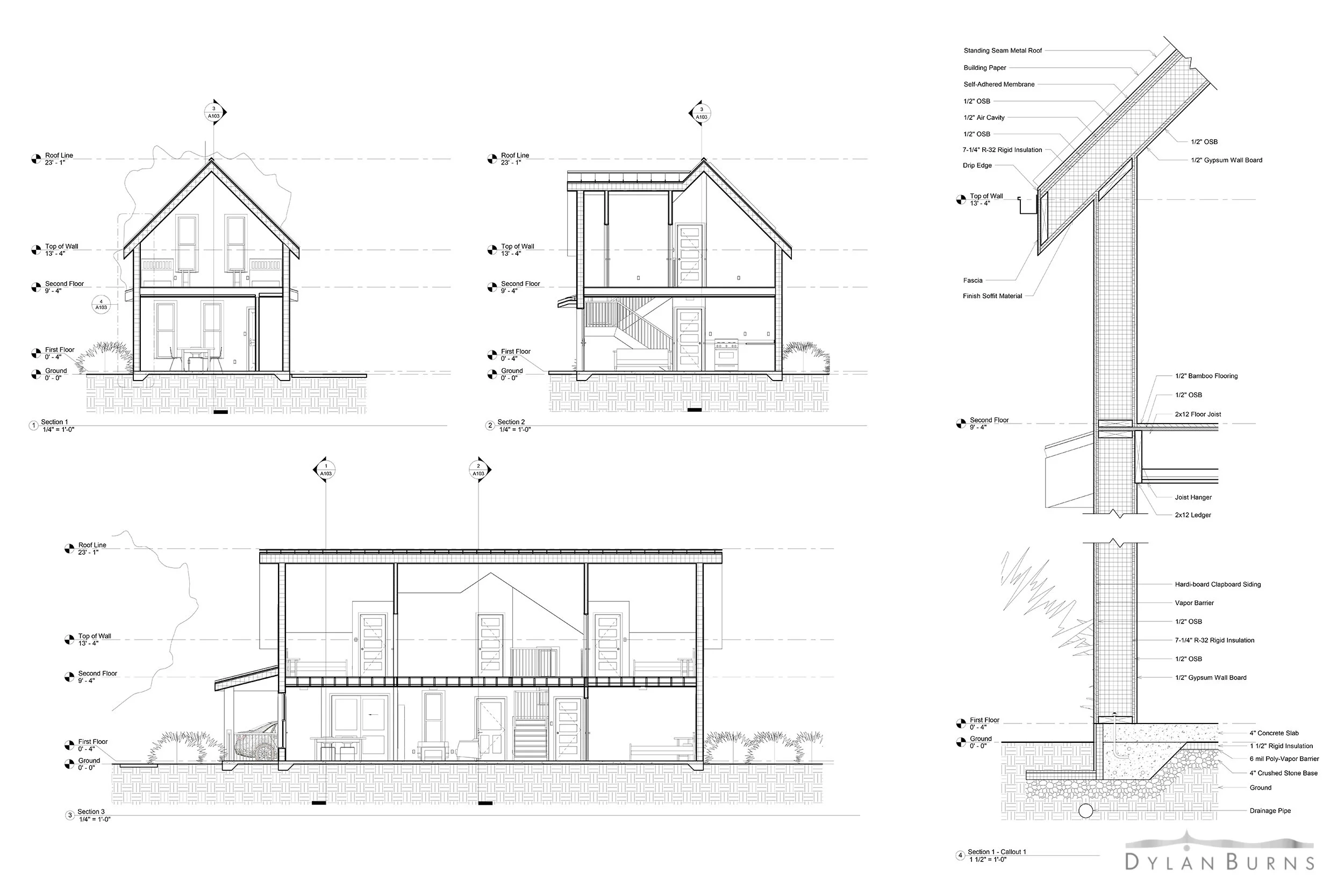habitat green build




This design, created in the Inclusive Design Research Group, is a critical examination of Habitat for Humanity’s new-build archetype. The Buffalo chapter of Habitat for Humanity has, with only minor modifications, used the same plan for decades. This project takes the opportunity to propose a more effective model.
The Habitat Green Build, designed with input from local chapter management, makes a series of bold changes to the typical Habitat model. First, the house is designed to be inclusive, meaning it accommodates a wide range of resident conditions, sizes, and abilities. It is a lifespan design, meaning that it considers aging and the variety of changes that can come with it.
The slab-on-grade design allows for a zero-step entry which, when combined with an open floor plan, roll-in shower, and variable-height counters, allows for easy maneuverability of wheelchairs. The first floor bedroom ensures future livability, regardless of physical ability.
This design sought to address several other shortcomings of the current model. First, a heavy focus was placed on sustainability. The use of structural insulated panels creates a more thermally efficient home. An array of solar panels supplies the full load of electricity for the home. A rain garden surrounds the house on the front, side, and back, collecting all run-off from the roof, while also creating desirable landscaping.
The design promotes strong urban qualities. By changing the scale of the house, a 30’ wide lot is needed, rather than the previously-used double-wide 60’ lots. This ensures that the home not only complements the scale of existing homes, but also promotes density.
The use of durable materials, such as fiber cement siding and metal roofing, fulfills the dual Habitat and inclusive design goal of having a low-maintenance exterior, while also allowing for an attractive and cohesive appearance. The result is a house that takes care of itself and its occupants for a long time.
Project Type: Studio
Role: Designer
Professor: Dr. Edward Steinfeld
